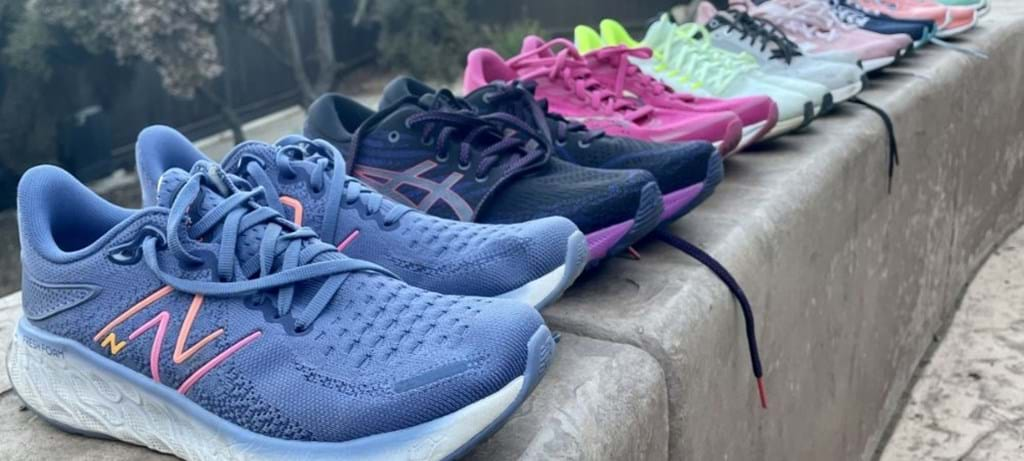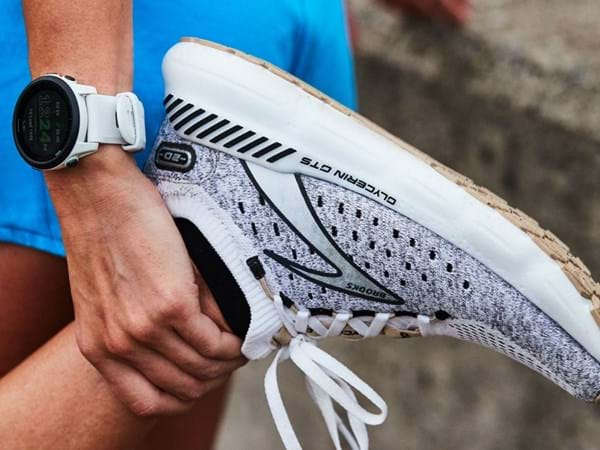
Running shoes – how to choose the right one
Running is an inexpensive sport, but if there’s one thing you need to get right it’s your running shoes. Your running shoes are designed to complement your natural running gait and protect you from injury – stride after stride. Here’s how to choose the perfect ones.
Opt for well cushioned running shoes
When we run, an impact force of up to three times our bodyweight travels through the foot and lower leg, causing stresses and strains or micro-damage to the joints, bones and soft tissue structures. Over time, accumulated micro damage can lead to injury.
Running shoes are specifically designed with cushioned midsole technologies to help absorb shock, reduce impact and in the long term, reduce the risk of injury.
Look for rebounding cushioning technology in midsoles and particularly in the heel, where most impact occurs on heel strike, and the forefoot for a springy propulsion.

Choose the right shoes for your gait
Probably the most important factor when choosing your running shoes. Running shoes are made to cater for different types of running gait, and this is determined by the extent to which you pronate.
Pronation refers to the natural inwards rolling of the foot through the gait cycle and is the body’s natural way of absorbing shock.
"Due to each individual's biomechanics, everyone lands their stride differently. Shoe manufacturers have understood this and provide shoes for all gaits. Therefore, to minimise the risk of injury, it’s best to have the correct shoe."
Running gaits are broadly divided into three categories.
Neutral Runners
Neutral runners pronate to a level which is biomechanically correct. They are best suited to neutral or cushioned shoes which complement their natural efficient gait.
Overpronators
Here, the arch collapses through the gait cycle and the foot rolls inwards excessively. Overpronators should wear support shoes to help support the inside of the foot and arch and help guide the foot into a more biomechanically efficient gait. Overpronators are common and account for 70% of all runners.
Underpronators
Otherwise known as supinators, runners who underpronate roll inwards to a sufficient degree, sitting on the outside edge of the foot through the gait cycle. Relatively uncommon, supinators suit neutral, cushioned shoes to help them absorb shock.
How do i know what type of gait i have?
One way is to have your gait checked with a gait analysis.
This involves running for 30 seconds or so on a treadmill while your gait is videoed.
A specialist will then analyse your running gait and recommend a shoe to suit it. Check out our free gait analysis service here.
One super-easy option is to utilise the “Wet Footprint Test.”
This means wetting your feet, standing on a piece of paper and looking at your wet footprint - in particular at your foot arch. Your arch type is a good indicator of your running gait – an overpronator will have low to flat arches, a supinator, a high rigid arch and a neutral runner a normal arch.
Finally, the wear pattern on the outsoles of your shoes can also act as a guide.
An overpronator will see wear on the outside heel and inside forefoot, particularly under the big toe. Underpronators will see the most wear along the outside of their shoe.
What’s your mileage?
Are you running 5k a few times a week or are you training for a marathon? It’s important to bear in mind that your running shoes will last you around 400-600 miles before the cushioning and support features start to deteriorate. If you’re in the lower end of the mileage bracket, a mid-mileage shoe will last you a good 6 months or more but if you’re running big miles in training, it’s worth investing in a pair of high mileage shoes so you’re not constantly changing up your footwear.
High mileage runners should also opt for high cushioned models to help protect the foot and lower leg against continuous and repetitive impact.

"You’re looking for the right amount of cushion for the distances you’re running, for example a marathon runner would need more cushioning than someone just starting. A good guide on the amount of cushion in a shoe is normally the price - the more you pay normally means they more cushioning you get."
Are you a pavement pounder or a trail bunny?
If you’re running mostly on the road, it makes sense to opt for a road shoe that has enough cushioning and durability to cope with repetitive pounding on hard, concrete surfaces. Likewise, if you’re running nearly all on grassy surfaces or trails, you might want to opt for a pair of trail specific shoes.
The important thing is to always wear the right shoe for the surface you’re running on – a trail shoe will wear down quickly on the road and you’ll feel the lack of shock absorption. On the other side of the coin, a road shoe won’t provide you with enough grip to deal with slippery trail surfaces.

A final takeaway
If you take all of the above into consideration and you’ve established what type of runner you are, you’re well on the way to finding the right running shoe. Still needing some help to find the right one?